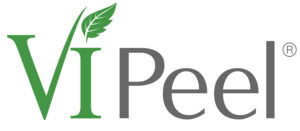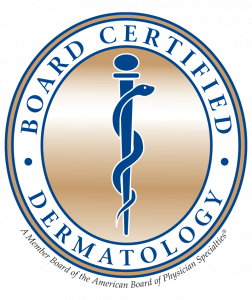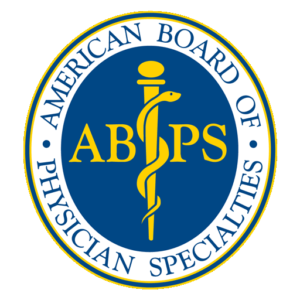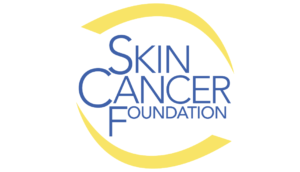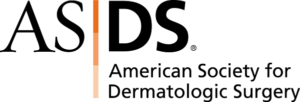
What are the benefits of Chemical Peels?
Craig Singer MD Dermatology is proud to offer a variety of chemical peels for the brightening and correction of different skin conditions. Chemical peels improve the appearance of acne, discoloration, brown spots, fine wrinkles, sun damage, and some types of scarring. Each type of chemical peel is
tailored to the patient’s needs.
See below for the recommended chemical peel based on skin condition:
| Acne (active acne with blackheads, pimples, and cysts) |
|
| Dark spots from Acne |
|
| Acne Scarring |
|
| Melasma |
|
| Mild photoaging |
|
| Mild to Moderate Photoaging |
|
Beta-Lift salicylic acid (20% or 30%) AKA: Acne BOOST Treatments
Craig Singer MD Dermatology offers a versatile treatment to speed the process of treating acne. Acne BOOST treatments have several important benefits:
- Opening blocked pores (blackheads and whiteheads)
- Penetration into the sebaceous glands to reduce oiliness
- Anti-inflammatory reduction of pimples and painful cysts
- Reduction in redness and dark discoloration that result from acne
The face is gently cleaned and then degreased with alcohol and acetone. Medical grade salicylic acid is applied using a gauze pad. A tingling or mild burning it is felt initially and the sensation diminishes after 3 minutes. The treatment concludes in five minutes and moisturizer is applied. For those with sensitive skin, a PEG version (non-alcohol base) is available instead of the traditional preparation and this vehicle produces no burning sensation.
No, there is not. Any skin peeling is usually microscopic or just a few mild flakes, and you will be able to go back to school or work immediately. Just make sure to moisturize and avoid direct sun and wear sunscreen/hats for the next couple days.
No, you do not. In general, you do not need to stop your medications. However, if you are feeling irritated from your medications, then you should stop 2-3 days prior.
What is the cost?
$45 per peel (NEW SPECIAL PRICING!!!)
Glycolic acid (30-50%)
The use of alpha hydroxy acids (AHA’s) such as glycolic acid has been used in cosmetics for centuries. Some fruit acids were used in their natural state in ancient Greece and Egypt. Glycolic acid, which is derived from sugarcane, became extremely popular in the 1990’s with promises of skin rejuvenation.
Glycolic acid peels can improve sun damage, mild wrinkles, hyperpigmentation, melasma, and sunspots or for those who want rejuvenation of their skin.
Because these are ‘superficial’ peels, most if the peeling that occurs is microscopic and hence invisible. That’s why these are known as “lunchtime peels” as patients
can go back to work right afterwards.
Application of glycolic acid produces a mild stinging sensation during the chemical peel and the acid is neutralized with sodium bicarbonate and water. A hand held fan helps reduce the burning sensation. Mild redness typically develops but resolves within a day. The peeling occurs microscopically and is typically not noticeable to others. Because these are superficial peels, multiple sessions are needed to achieve desired effect.
Preparation of the skin in the form of glycolic acid pads or retinoids, and sometimes bleaching agents are recommended for several weeks prior to the chemical peel.
Yes. Stop all retinoids (tretinoin, etc.) and glycolic acid 3 days before your peel.
Every 2-3 weeks, and most patients need at least 5 peels for meaningful improvement.
Every 2-3 weeks, and most patients need at least 5 peels for meaningful improvement.
$50 per peel
VI PEEL Precision Plus
VI Peel Precision Plus is a medium-depth powerhouse peel that works to promote rapid cellular turnover and suppresses pigment production producing more even andbright skin tone. The Precision Peel is made from a synergistic blend of ingredients that includes TCA, Tretinoic Acid, Salicylic Acid, Phenol, Vitamin C,
hydroquinone, and Kojic acid.
• Benefits of the VI Peel Precision Plus:
• Improvement in tone, texture, and clarity of the skin
• Reduction or elimination of age spots, freckles, and hyper-pigmentation, including melasma
• Softening of lines and wrinkles
• Clearance of acne
• Reduction in acne scars
• Stimulation of collagen, for firmer, more youthful skin.
Three treatments are required, spaced apart by four weeks, to see maximal results.
How much peeling will I have?
This varies between people. Most will peel over the entire face, starting centrally. Peeling usually develops 2 to 3 days after the peel and can last for several days.
If you are worried about peeling during the work week, then we recommend undergoing the VI Peel on a Wednesday, such that most of the peeling occurs on
Saturday and Sunday.
Downtime is usually 5 days but can last up to 7 days.
Priming the skin: We recommend pretreating the face with a retinoid for 3 to 4 weeks prior to the peel to get the skin ready and to ensure even peeling. This will also help the skin heal more quickly. However please stop the retinoid 4 days prior to the peel. In addition, those patients with a darker skin complexion or darker pigmented spots should also pretreat with a hydroquinone preparation several weeks prior to the chemical peel.
Starting Four days before your chemical peel, please avoid these products:
•Retin-A™, tretinoin, adapalene, Differin, Epiduo™, Tazorac™, Veltin™, Ziana™. Akleif™, and any product containing Retinol.
Also, starting four days prior, avoid salicylic acid and glycolic acid wash, and any exfoliating products that may be drying or irritating to the skin.
Finally, remember to be careful in the sun two weeks prior to the chemical peel, and practice good sun protection for several weeks afterwards.
If you have any major social obligations within 10 days of your chemical peel, you should probably cancel your chemical peel appointment.
Remember to stop all skin priming agents 4 days before your peel.
Every 2-3 weeks, and most patients need at least 5 peels for meaningful improvement.
What does the VI Peel cost?
$250 per peel – a normal series is three peels
Jessner’s Peel
Jessner’s peel is a chemical treatment that removes superficial layers of skin. It is used to dry out active acne, to lighten dark spots, to improve photodamage of the skin, and to improve shallow wrinkling and scarring. Jessner’s peel contains the following active ingredients: salicylic acid, lactic acid, and resorcinol. Because the solution is a combination of mild acids, some stinging usually occurs during application.
Jessner’s peel should not be used in patients of skin of color.
A Jessner’s peel will make your skin feel dry, flake, and peel for anywhere from 2 to 7 days, depending on the depth of the peel. During this time, you will look a bit red in peeled areas and it may be difficult for you to cover it up with makeup.
In most cases, peeling usually occurs between the second and fifth days after the peel. Your skin will probably become very dry, and small cracks may develop. During the healing, it is critical that you avoid sun exposure and follow postoperative instructions consistently. If you have any major social obligations within 10
days of your chemical peel, you should probably cancel your chemical peel appointment.
As you continue with light peel treatments, they will be spaced at 2- to 4-week intervals. The number of treatments required for any given problem varies with each person and is determined by the patient and the doctor. The number of coats of solution varies with skin type. It is impossible to know in advance how much peeling will occur, but if you note the relative amount of peeling that occurs after each session, future peels can be adjusted to suit your needs. There is no limit to the number of peels a person can receive if improvement continues.
What sort of preparation do I need?
Priming the skin: We recommend pretreating the face with a retinoid for 3 to 4 weeks prior to the peel to get the skin ready and to ensure even peeling. This will also help the skin heal more quickly. However please stop the retinoid 4 days prior to the peel. In addition, those patients with a darker skin complexion or darker pigmented spots should also pretreat with a hydroquinone preparation several weeks prior to the chemical peel.
Starting Four days before your chemical peel, please avoid these products:
•Retin-A™, tretinoin, adapalene, Differin, Epiduo™, Tazorac™, Veltin™, Ziana™. Akleif™, and any product containing Retinol.
Also, starting four days prior, avoid salicylic acid and glycolic acid wash, and any exfoliating products that may be drying or irritating to the skin.
Finally, remember to be careful in the sun two weeks prior to the chemical peel, and practice good sun protection for several weeks afterwards.
If you have any major social obligations within 10 days of your chemical peel, you should probably cancel your chemical peel appointment
Remember to stop all skin priming agents 4 days before your peel.
Cost of Jessner’s peel is $125 per peel

